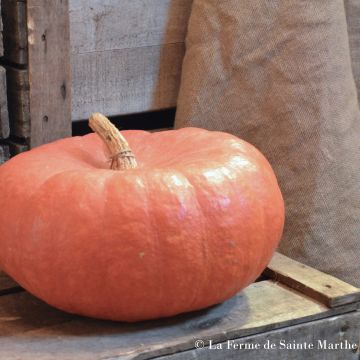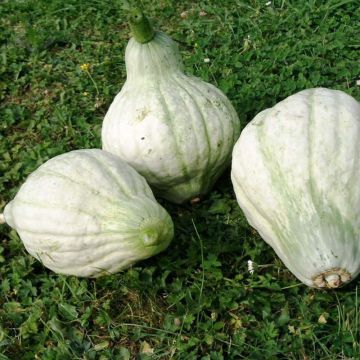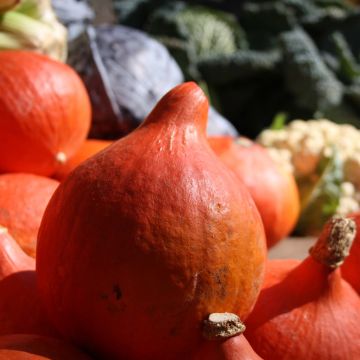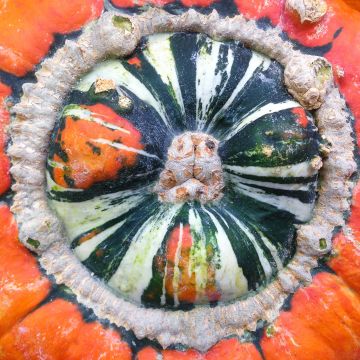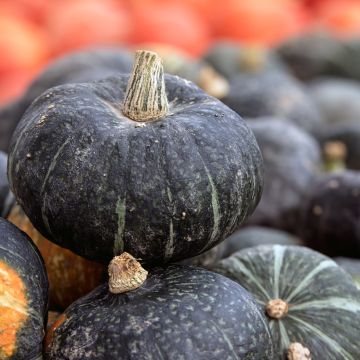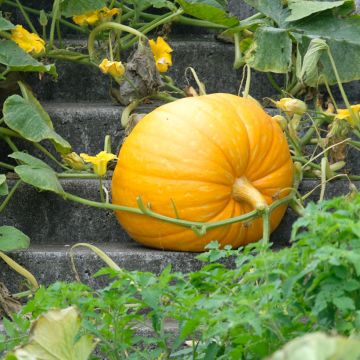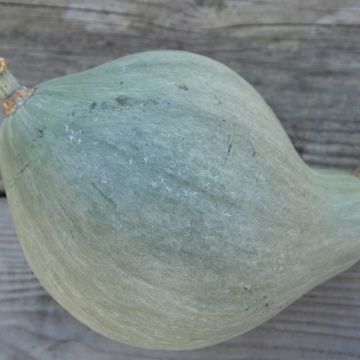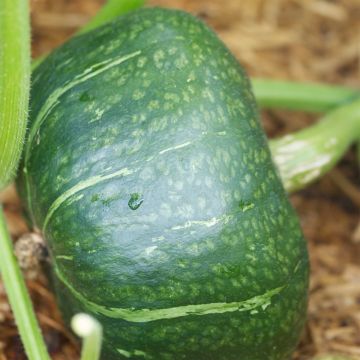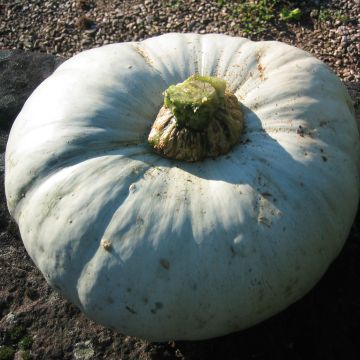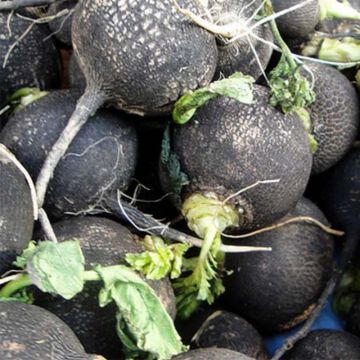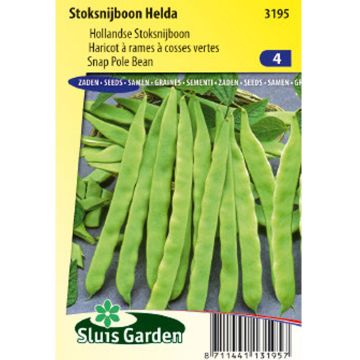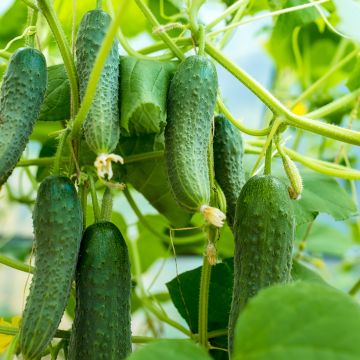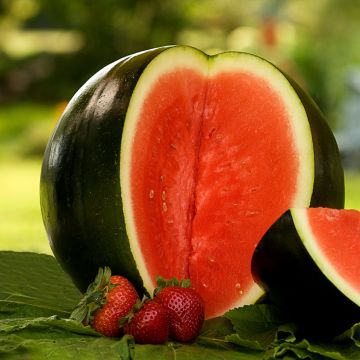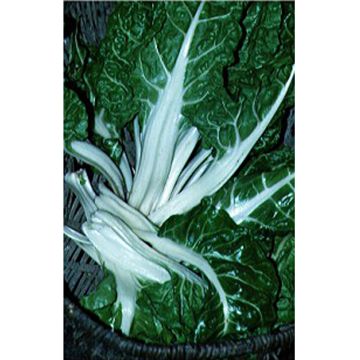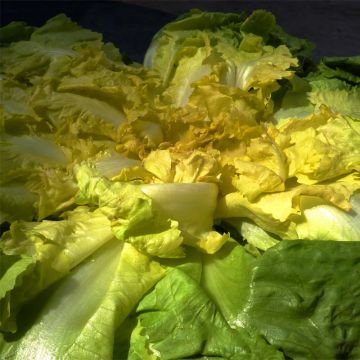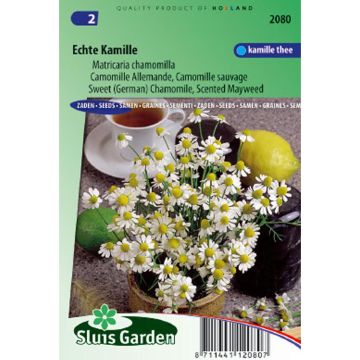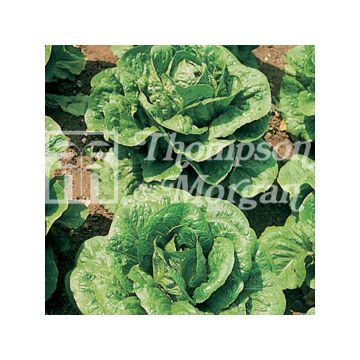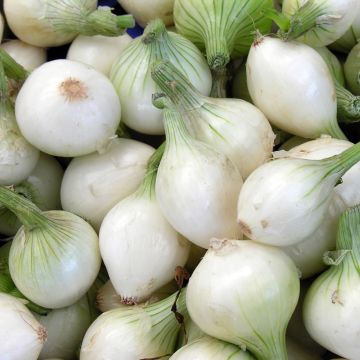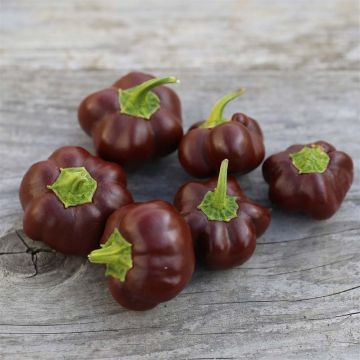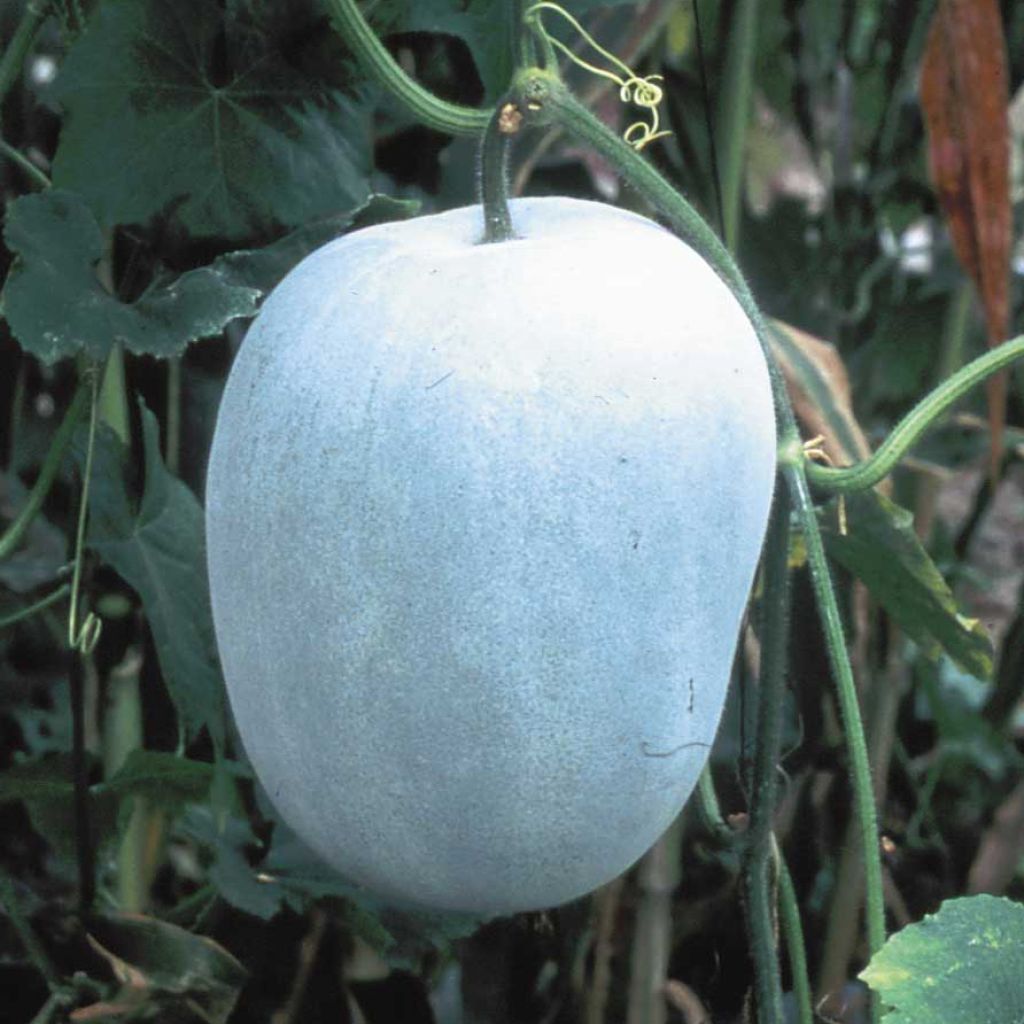

Potiron Twonga Bio - Ferme de Sainte Marthe


Potiron Twonga Bio - Ferme de Sainte Marthe
Organic Pimpkin Twonga - Ferme de Sainte Marthe seeds - Cucurbita cerifera
Cucurbita cerifera Twonga
Squash
This item cannot be shipped to the selected country
Dispatch by letter from €3.90
More information
Schedule delivery date,
and select date in basket
This plant carries a 6 months recovery warranty
More information
We guarantee the quality of our plants for a full growing cycle, and will replace at our expense any plant that fails to recover under normal climatic and planting conditions.
Seed-only orders are dispatched by sealed envelope. The delivery charge for seed-only orders is €3.90.
Description
Cucurbita 'Twonga' is a rare variety that produces slightly elongated fruits with fuzzy skin. The fruits measure 20 to 50cm (8 to 20in) in length and 10 to 15cm (4 to 6in) in diameter. Its flesh is white, sweet, and watery. It is mainly consumed in gratins. Sow the seeds from April to June for a harvest between September and October.
The average yield is 2 to 4 fruits per plant. Each fruit weighs between 2 and 6 kg.
Pumpkins, squash, and giraumons belong to the Cucurbitaceae family. This annual herbaceous plant has long, vigorous, trailing, and even climbing stems with strong tendrils. Each plant has separate male and female flowers, making it monoecious: the female flowers will produce the fruits once they are pollinated by the pollen from the male flowers.
They come in many shapes and colours, from large ribbed fruits in orange or red with orange flesh, to oblong shapes, pear shapes, or "Turkish hat" shapes. Native to South America, this species was introduced to Europe around the 16th or 17th century, along with its cousins, other species of Cucurbita. They are often wrongly called "pumpkins" even though they belong to a different species, Cucurbita pepo, with fibrous and stringy flesh and a hard and fibrous stem. As for the pumpkin, it has sweet, flavourful, and less stringy flesh with a tender and spongy stem.
Pumpkins are low in calories but rich in vitamins, trace elements, and potassium. They are known for their antioxidant properties.
Harvest and storage
Harvest as late as possible, but before the first frost. Keep a large part of the stalk and store the fruit in a temperate room (10 to 15°C (50 to 59°F)). This way, you can store them for a few months to a year. Ensure they do not touch each other.
The gardener's tip
To save space and protect your fruits from rot, pumpkins can be grown vertically on supports such as a wire mesh or sturdy stakes. If you let your pumpkins run, consider placing a tile, brick, or a thick layer of straw between the ground and the fruit to isolate it from moisture and prevent rotting.
Report an error about the product description
Harvest
Plant habit
Foliage
Botanical data
Cucurbita
cerifera
Twonga
Cucurbitaceae
Squash
Cultivar or hybrid
Annual
Other Pumpkin seeds
Planting and care
Preparation
Like all plants from the Cucurbitaceae family, it is a very demanding vegetable that requires well-fertilised soil. It is wise to apply compost, preferably in autumn, even if it is not fully decomposed (more than 3kg per m2). Rake the compost into the soil to a depth of 5cm (2in), after having loosened the soil, as for any vegetable cultivation.
Sowing
Sow the seeds from April to June at a temperature ranging from 16 to 35°C (60.8 to 95°F). Germination generally takes between 9 and 10 days.
Before sowing, you can soak the seeds in a little water for 24 hours to stimulate germination.
There are two ways to sow your seeds:
Sow the seeds 3 weeks before transplanting, under a cloche or in a warm place. Sow 2 or 3 seeds per pot or container. Ensure the container is large enough for root development. After germination, keep only the most vigorous plant. Plant in open ground after mid-May, once all risk of frost has passed. It is important not to sow too early, as the plants could become weak. Additionally, they will have developed a root system that will not withstand transplantation.
Alternatively, plant your seeds directly in place. This can be done from mid-May. Ensure the soil is properly warmed and that all risk of frost has passed. Place 3 seeds in each hole. Cover the soil with organic matter (compost, clippings, leaves, etc.), which will help maintain soil moisture. Thin out after 2 to 3 weeks to keep only the most vigorous plant.
Cultivation
From sowing or planting, water generously, taking care not to disturb the seeds. Water regularly during fruit formation. However, limit watering during the ripening period.
Seedlings
Care
Intended location
This item has not been reviewed yet - be the first to leave a review about it.
Vegetable seeds
Haven't found what you were looking for?
Hardiness is the lowest winter temperature a plant can endure without suffering serious damage or even dying. However, hardiness is affected by location (a sheltered area, such as a patio), protection (winter cover) and soil type (hardiness is improved by well-drained soil).

Photo Sharing Terms & Conditions
In order to encourage gardeners to interact and share their experiences, Promesse de fleurs offers various media enabling content to be uploaded onto its Site - in particular via the ‘Photo sharing’ module.
The User agrees to refrain from:
- Posting any content that is illegal, prejudicial, insulting, racist, inciteful to hatred, revisionist, contrary to public decency, that infringes on privacy or on the privacy rights of third parties, in particular the publicity rights of persons and goods, intellectual property rights, or the right to privacy.
- Submitting content on behalf of a third party;
- Impersonate the identity of a third party and/or publish any personal information about a third party;
In general, the User undertakes to refrain from any unethical behaviour.
All Content (in particular text, comments, files, images, photos, videos, creative works, etc.), which may be subject to property or intellectual property rights, image or other private rights, shall remain the property of the User, subject to the limited rights granted by the terms of the licence granted by Promesse de fleurs as stated below. Users are at liberty to publish or not to publish such Content on the Site, notably via the ‘Photo Sharing’ facility, and accept that this Content shall be made public and freely accessible, notably on the Internet.
Users further acknowledge, undertake to have ,and guarantee that they hold all necessary rights and permissions to publish such material on the Site, in particular with regard to the legislation in force pertaining to any privacy, property, intellectual property, image, or contractual rights, or rights of any other nature. By publishing such Content on the Site, Users acknowledge accepting full liability as publishers of the Content within the meaning of the law, and grant Promesse de fleurs, free of charge, an inclusive, worldwide licence for the said Content for the entire duration of its publication, including all reproduction, representation, up/downloading, displaying, performing, transmission, and storage rights.
Users also grant permission for their name to be linked to the Content and accept that this link may not always be made available.
By engaging in posting material, Users consent to their Content becoming automatically accessible on the Internet, in particular on other sites and/or blogs and/or web pages of the Promesse de fleurs site, including in particular social pages and the Promesse de fleurs catalogue.
Users may secure the removal of entrusted content free of charge by issuing a simple request via our contact form.
The flowering period indicated on our website applies to countries and regions located in USDA zone 8 (France, the United Kingdom, Ireland, the Netherlands, etc.)
It will vary according to where you live:
- In zones 9 to 10 (Italy, Spain, Greece, etc.), flowering will occur about 2 to 4 weeks earlier.
- In zones 6 to 7 (Germany, Poland, Slovenia, and lower mountainous regions), flowering will be delayed by 2 to 3 weeks.
- In zone 5 (Central Europe, Scandinavia), blooming will be delayed by 3 to 5 weeks.
In temperate climates, pruning of spring-flowering shrubs (forsythia, spireas, etc.) should be done just after flowering.
Pruning of summer-flowering shrubs (Indian Lilac, Perovskia, etc.) can be done in winter or spring.
In cold regions as well as with frost-sensitive plants, avoid pruning too early when severe frosts may still occur.
The planting period indicated on our website applies to countries and regions located in USDA zone 8 (France, United Kingdom, Ireland, Netherlands).
It will vary according to where you live:
- In Mediterranean zones (Marseille, Madrid, Milan, etc.), autumn and winter are the best planting periods.
- In continental zones (Strasbourg, Munich, Vienna, etc.), delay planting by 2 to 3 weeks in spring and bring it forward by 2 to 4 weeks in autumn.
- In mountainous regions (the Alps, Pyrenees, Carpathians, etc.), it is best to plant in late spring (May-June) or late summer (August-September).
The harvesting period indicated on our website applies to countries and regions in USDA zone 8 (France, England, Ireland, the Netherlands).
In colder areas (Scandinavia, Poland, Austria...) fruit and vegetable harvests are likely to be delayed by 3-4 weeks.
In warmer areas (Italy, Spain, Greece, etc.), harvesting will probably take place earlier, depending on weather conditions.
The sowing periods indicated on our website apply to countries and regions within USDA Zone 8 (France, UK, Ireland, Netherlands).
In colder areas (Scandinavia, Poland, Austria...), delay any outdoor sowing by 3-4 weeks, or sow under glass.
In warmer climes (Italy, Spain, Greece, etc.), bring outdoor sowing forward by a few weeks.


































